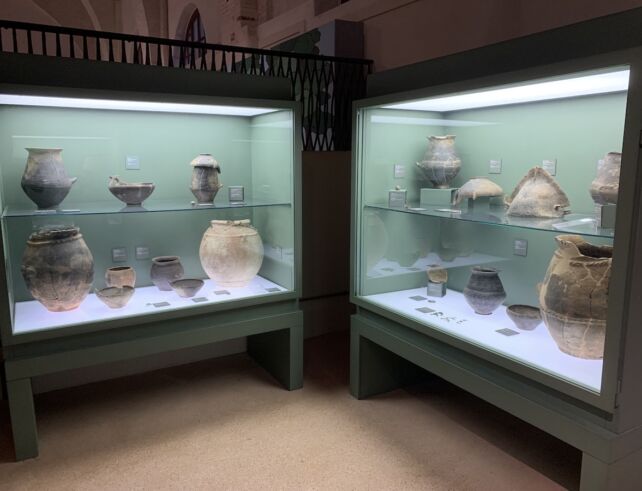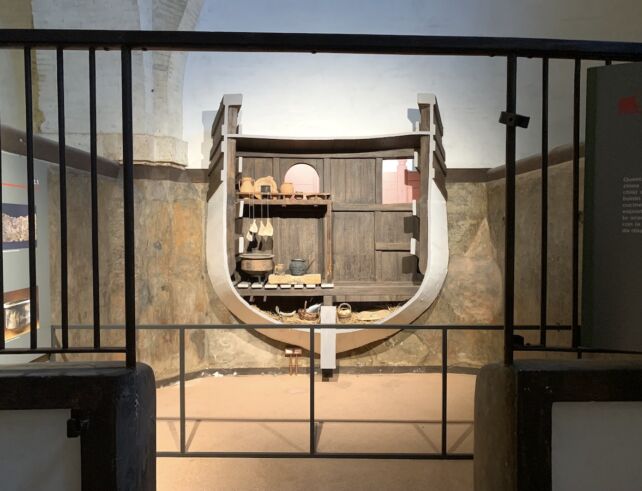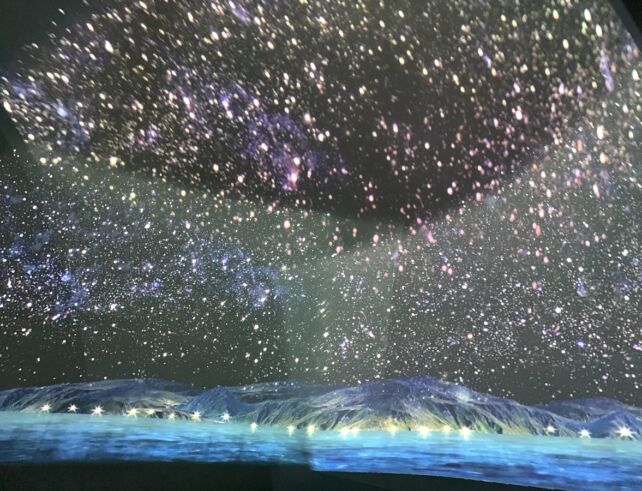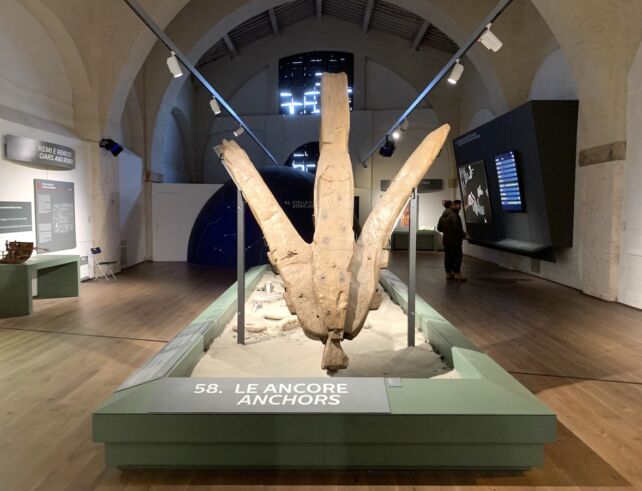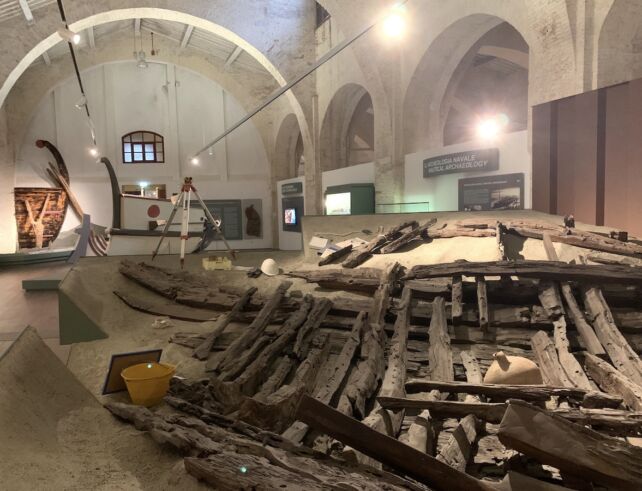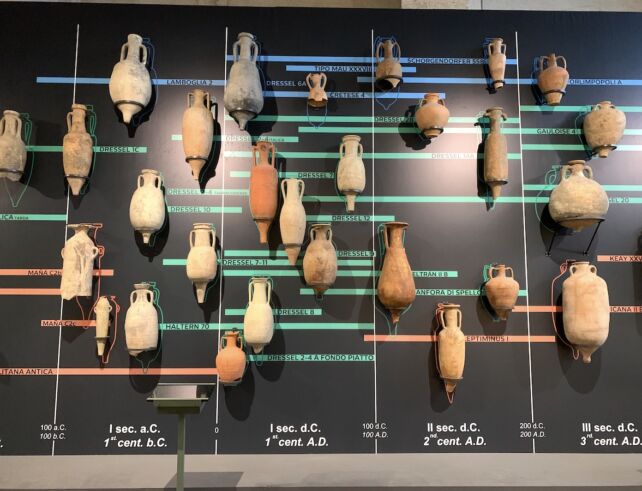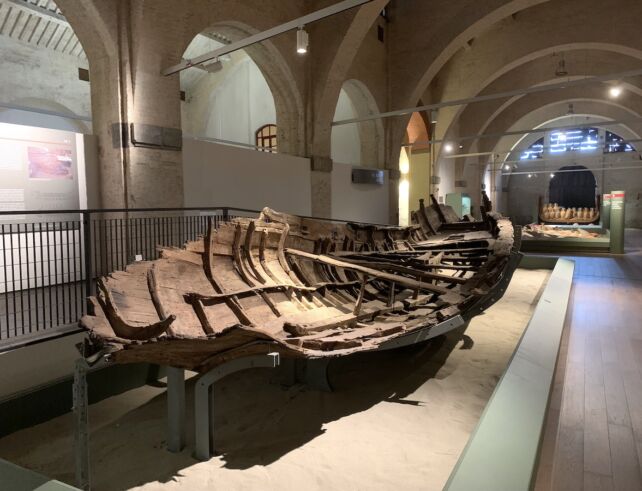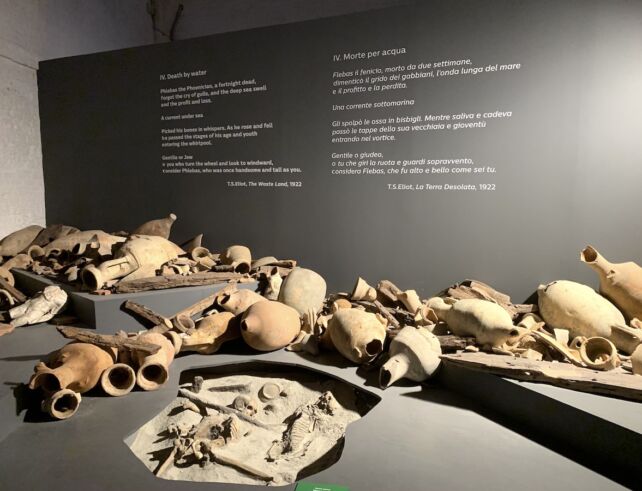Share This Article
I enjoy visiting museums! The Maritime Museum in Pisa stands out because of its theme and its location in remarkable interiors. While visiting the city of the “Leaning Tower,” we knew we wanted to discover more than just this world-famous landmark. The Maritime Museum was one of the first places we headed to.
The Maritime Museum in Pisa is actually the Museum of Ancient Ships (Museo delle Navi Antiche di Pisa), although the exhibition’s scope is much broader than just ships. It tells the story of Pisa, its role as a seaport, and many other fascinating aspects, such as archaeological excavations and the types of amphorae used across the Mediterranean basin.
Location and Getting There
The Maritime Museum in Pisa is located close to the city center. Its exact address is Lungarno Ranieri Simonelli, 16, 56126 Pisa. The easiest way to get there is by walking along the northern bank of the Arno River. If you’re coming from the airport, you can take the S1 bus and then walk from the train station (about 1 km). There are several options, but keep in mind that Pisa isn’t very large, so even if you decided to walk from the airport directly to the museum, it’s only 2.6 kilometers away.
Opening Hours and Tickets
Like many museums, the Maritime Museum in Pisa has different opening hours depending on the season. In the off-season, from October to May, it is open on Thursdays from 9:00 a.m. to 1:00 p.m., and on Fridays, Saturdays, and Sundays from 10:30 a.m. to 8:30 p.m.
Tickets cost €11.50 for adults and €6.50 for children and youth (ages 6–18). There is also a family ticket available for €21.50, which covers two adults and up to three children aged 6–18. Tickets can be purchased at the museum ticket office or online via the museum’s website.

Exploring Pisa Through the Ages
The Maritime Museum in Pisa occupies the rooms of the so-called Medici Arsenal. These were built over 400 years ago and are truly impressive. Walking through them, we travel through the history of Pisa and its evolving exhibitions. We start with the history of Pisa from the time of the Etruscans and Romans, then move slightly forward in time to learn about the city’s crafts and daily life. Here, you’ll discover plenty about fishing, pottery, agriculture, and even forestry.
In the later part of the exhibition, you’ll learn more about the ships themselves as well as the archaeological excavations that brought them to light. The first section of the exhibition is located in the horse stalls—each stall tells a different story. There are occasional multimedia displays, but you’ll find a wealth of artifacts and information. Before entering each stall, you’ll find a brief description in Italian and English outlining the story it tells. Throughout the exhibition, all information is provided in both languages.
At the end of the exhibition (Section VII), there is also a small planetarium where you can learn more about navigation and constellations. In the same room, you can see a cleverly designed (and humorous) departures and arrivals board for voyages, including travel times and other details important for travelers of the era.
The final part of the exhibition focuses on life aboard the ships themselves—covering sailors’ equipment, their luggage, lighting, and kitchens.
Ancient Ships
A separate section of the exhibition (Sections V and VI) is dedicated to ancient ships. This is where they were built and repaired. On display, you can see original fragments of ships found in Pisa and the surrounding area, along with their equipment and cargo. Pisa’s location on both the river and the sea meant that both seafaring and inland ships could be found here. Both types are presented and explained in the exhibition.
Some of the discovered remains no longer resemble a complete ship, but thanks to the reconstructions and informational panels, you can easily imagine their original form. In the section on ancient ships, you’ll also find plenty of information about the condition in which the vessels were found and where they were located. This part of the exhibition also teaches a lot about ship equipment.
Moving on to Section VI, you’ll learn more about trade. What impressed me most was the display of amphorae found in Pisa across different periods. Although their shapes changed only slightly over time, their purpose remained the same—they served as perfect containers for wine, olive oil, or other liquids. This section also provides information on the transport of luxury goods such as marble and fine ceramics.
Archaeology
The city has been repeatedly affected by floods, and the Maritime Museum in Pisa highlights this fact extensively. Over the years, some parts of the city were regularly submerged, but thanks to archaeological excavations, much of its past has been reconstructed.
You can observe a reconstruction of an archaeological site and learn about the specific challenges archaeologists face when working in wet environments. The exhibition features crates similar to those used by archaeologists to collect specimens. You can also see which artifacts, from various historical periods, are revealed through these studies. All of these elements are located in Section III of the exhibition.
What’s Nearby?
The Maritime Museum in Pisa is located in the western part of the city center. It partially occupies buildings known as the Medici Arsenal, which was an ancient fortress forming part of the city walls. It is also referred to as the Old Citadel (a newer one was built later). The complex also includes the Torre Guelfa, a 15th-century tower that was destroyed and rebuilt in the mid-20th century.
On the opposite side of the Arno River, you can find an interesting church – Chiesa di Santa Maria della Spina. This richly decorated marble church dates back to 1230.
Other Maritime Museums
If you enjoy this type of attraction, I can also recommend two other maritime museums. They are different from each other but both made a strong impression on me.
The first is the Maritime Museum in Karlskrona. Located right by the sea, it tells the story of the Swedish Navy and merchant fleet. You can even enter a real submarine, and several other museum ships are moored nearby. The museum features an interesting exhibition and plenty of artifacts to explore.
The second is the Maritime Museum in Barcelona. It is also located close to the sea, in remarkable interiors. Here, you can learn a lot about the history of the Spanish fleet and about Barcelona’s role as a port city.




